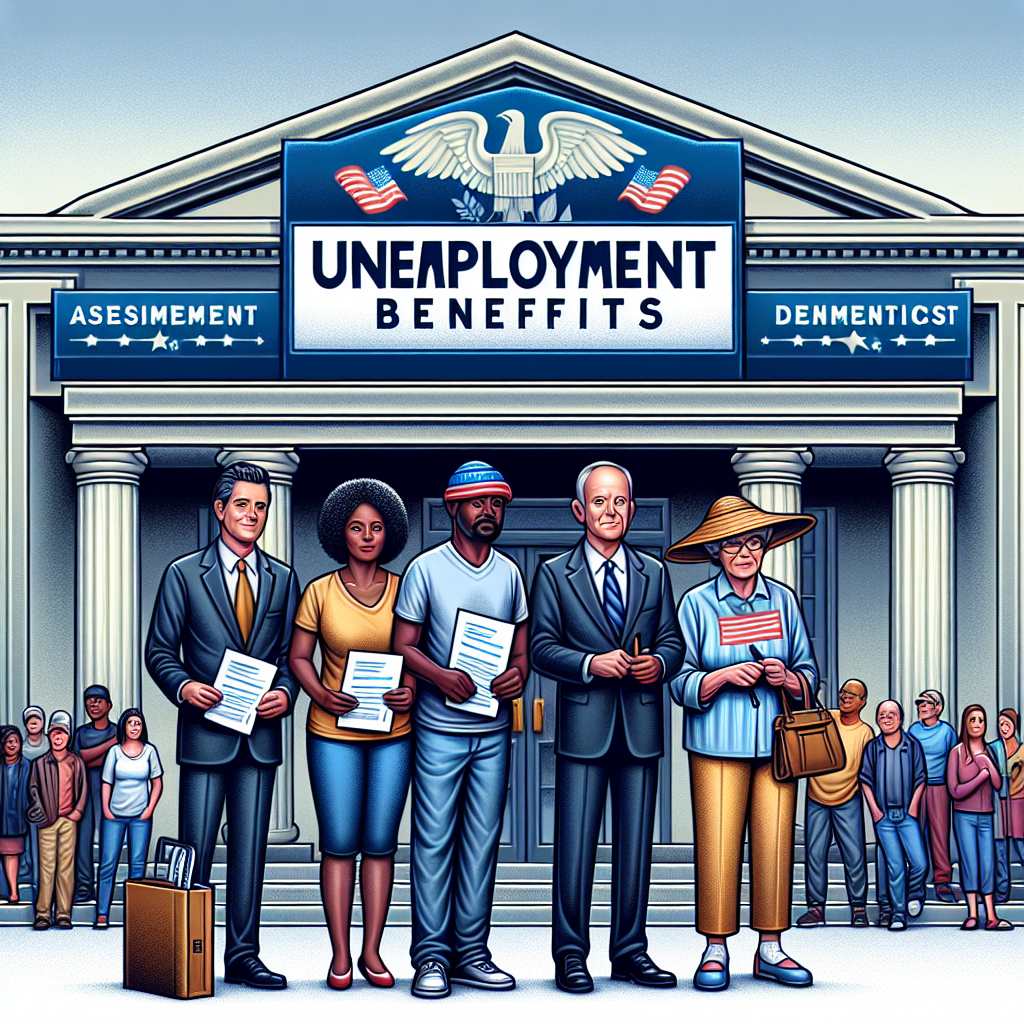Rising Unemployment Claims Amid Economic Shifts
Unemployment claims in the U.S. increased more than expected last week due to temporary auto plant closures and Hurricane Beryl. The labor market shows signs of cooling, influencing the Federal Reserve to consider cutting interest rates. Initial claims rose to a 10-month high, influenced by various economic factors.

The number of Americans filing new applications for unemployment benefits surged beyond expectations last week, despite not indicating a major shift in the labor market amid temporary auto plant closures and disruptions from Hurricane Beryl. The Labor Department's report on Thursday suggested a tightening labor market, making it harder for the unemployed to secure new jobs compared to the previous year. Unemployment rolls swelled to their highest in over two and a half years in early July, coinciding with a recent uptick in the jobless rate.
An easing labor market and declining inflation have positioned the Federal Reserve to potentially cut interest rates in September, with additional cuts anticipated later in the year, as financial markets predict. "Jobless claims have been gradually rising since the start of the year," stated Nancy Vanden Houten, lead U.S. economist at Oxford Economics. "This trend aligns with a cooling labor market characterized by slower hiring rather than increased layoffs."
Initial claims for state unemployment benefits rose by 20,000 to a seasonally adjusted 243,000 for the week ending July 13, a higher number than the 230,000 forecasted by economists polled by Reuters. This rise pushed claims back to a 10-month high reached in early June, aligning with the upper limit of their annual range. The increase erased the previous week's decline, attributed to holiday data adjustments, such as U.S. Independence Day.
Auto manufacturers typically halt assembly plants around the July 4 week for retooling, but varied shutdown schedules complicate the government's seasonal data adjustments. This year saw more concentrated plant shutdowns, causing an increase in claims similar to last year's pattern. "Given the Fed's heightened focus on the labor market and the rising unemployment rate reported through June, monitoring jobless claims is crucial," noted Conrad DeQuadros, senior economic advisor at Brean Capital. Stocks on Wall Street gained, the dollar appreciated against a basket of currencies, and U.S. Treasury prices dropped.
Hurricane Beryl's impact saw unadjusted claims jump 36,824 to 279,032, with Texas filings surging by 11,537 and California by 6,917. Significant increases were also noted in Georgia, Missouri, New York, Pennsylvania, and South Carolina. Conversely, states like New Jersey, Indiana, and Massachusetts saw declines. "Claims in Texas may remain elevated due to retroactive claims post-disaster, but this should settle by next week," said Ian Shepherdson, chief economist at Pantheon Macroeconomics.
The labor market is showing signs of cooling as the Fed's rate hikes in 2022 and 2023 temper demand. June's unemployment rate rose to a 2-1/2-year high of 4.1%. The Fed's recent "Beige Book" reported modest employment growth from late May to early July, noting decreased manufacturing employment and improved labor supply, reducing the urgency to hire new workers. However, factory employment could stabilize, supported by a Philadelphia Fed survey showing accelerated manufacturing activity and the first employment growth in nine months.
The claims data corresponds with the government's survey of business establishments for the nonfarm payrolls segment of July's employment report, with claims rising slightly between June and July survey weeks. Nonfarm payrolls added 206,000 jobs in June. Upcoming data on people receiving benefits post-initial week, indicative of hiring trends, will provide further insight into July's labor market conditions. Continuing claims rose 20,000 to 1.867 million for the week ending July 6, the highest since November 2021.
The Fed has kept its benchmark overnight interest rate within the 5.25%-5.50% range for the past year, having increased its policy rate by 525 basis points since 2022. "Businesses are not filling open positions as aggressively as before, as noted in the recent Beige Book," commented Jeffrey Roach, chief economist at LPL Financial. "We should expect more cautious commentary from Fed policymakers regarding the labor market."
(With inputs from agencies.)










